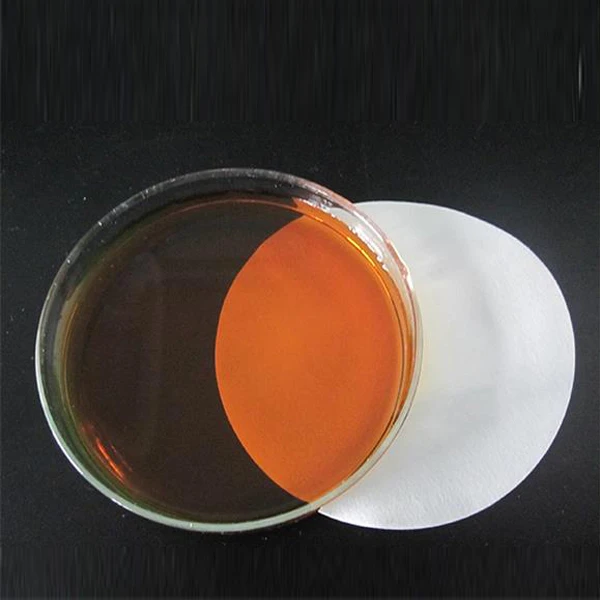
News
loka . 12, 2024 00:30 Back to list
Sodium Content and Properties of Polyaspartic Acid for Advanced Applications
Understanding the Sodium Percentage of Polyaspartic Acid Applications and Implications
Polyaspartic acid, a derivative of aspartic acid, has garnered significant attention due to its versatile applications across various industries, particularly in coatings, adhesives, and biomedical fields. The sodium salt of polyaspartic acid, often referred to as sodium polyaspartate, plays a pivotal role in enhancing its properties and expanding its utility in numerous applications. This article delves into the importance of the sodium percentage in polyaspartic acid, its implications for performance and functionality, and its relevance in contemporary applications.
The Structure and Significance of Polyaspartic Acid
Polyaspartic acid is a naturally occurring biopolymer that consists of repeating units of aspartate. Its structure endows it with properties such as biodegradability, nontoxicity, and excellent chelating capabilities. When sodium ions are introduced into this structure, the resulting sodium polyaspartate exhibits unique properties that enhance its performance in various scenarios. The sodium content affects the solubility, viscosity, and the overall stability of the polymer.
Sodium Percentage and its Impact
The sodium percentage in polyaspartic acid is crucial for determining its physicochemical properties. Typically expressed as a ratio or percentage of sodium content to the total weight of the polymer, this metric can significantly influence how the material behaves in different environments. Higher sodium percentages can lead to increased solubility in water, making sodium polyaspartate an excellent candidate for applications requiring dissolution in aqueous solutions.
Conversely, a lower sodium content may be beneficial in applications where reduced ionic strength is preferred, affecting viscosity and stability. Therefore, manufacturers customize the sodium content to tailor the properties of polyaspartic acid according to specific application requirements.
sodium of polyaspartic acid

Applications of Sodium Polyaspartate
1. Environmental Applications Sodium polyaspartate has gained traction in water treatment processes due to its chelating properties. It binds with metal ions, allowing for the removal of contaminants in various water bodies. By adjusting the sodium percentage, the chelating efficiency can be optimized, making it a valuable tool in environmental remediation efforts.
2. Industrial Coatings In the coatings industry, sodium polyaspartate acts as a dispersing agent, improving the stability of pigment dispersions and enhancing the overall quality of coatings. The sodium content influences the performance of the coating in terms of adhesion and durability. Polymers with an optimal sodium percentage can improve the efficiency of coatings, making them more resistant to wear and tear.
3. Biomedical Applications In the biomedical realm, sodium polyaspartate is utilized for drug delivery systems. Its biocompatibility and ability to form hydrogels make it ideal for encapsulating drugs and facilitating controlled release. The sodium percentage is critical here, as it affects the swelling behavior and release kinetics of the hydrogel. By adjusting the sodium content, scientists can fine-tune the release rates to match therapeutic needs.
4. Agricultural Uses In agriculture, sodium polyaspartate is explored as a soil conditioner and a water retention agent. The sodium content influences its effectiveness in binding moisture and nutrients in the soil, thus enhancing plant growth. By optimizing the sodium percentage, farmers can ensure that crops receive a steady supply of water and essential nutrients, leading to better yields.
Conclusion
The sodium percentage of polyaspartic acid is a vital factor that directly impacts its performance across various domains. From industrial applications to environmental and biomedical uses, adjusting the sodium content allows for the customization of this biopolymer to meet specific functional requirements. As research progresses and new applications are explored, understanding the intricacies of sodium polyaspartate will be crucial for harnessing its full potential in sustainable and innovative ways. Whether it’s in enhancing the durability of coatings or facilitating effective drug delivery, the versatility of sodium polyaspartate continues to be an area of significant interest and development in the scientific community.
-
OEM Polymer of Aspartic Acid Supplier L & D Aspartic Acid Customization High-Quality, Eco-Friendly Solutions
NewsJun.10,2025
-
CAS 64723-18-8 High Quality Supplier & Manufacturer Get Instant Quotes Online
NewsJun.10,2025
-
OEM Thermal Polyaspartic Acid - Leading Manufacturer & Supplier for Efficient Heat-Resistant Solutions
NewsJun.10,2025
-
Premium Polymer of Amino Acids High Purity & Factory Pricing
NewsJun.10,2025
-
Premium Micronutrients Plant Fertilizer for Healthy Crops Quote Now
NewsJun.10,2025
-
Premium EDTA-4Na Supplier & Manufacturer Competitive Quotes
NewsJun.09,2025
